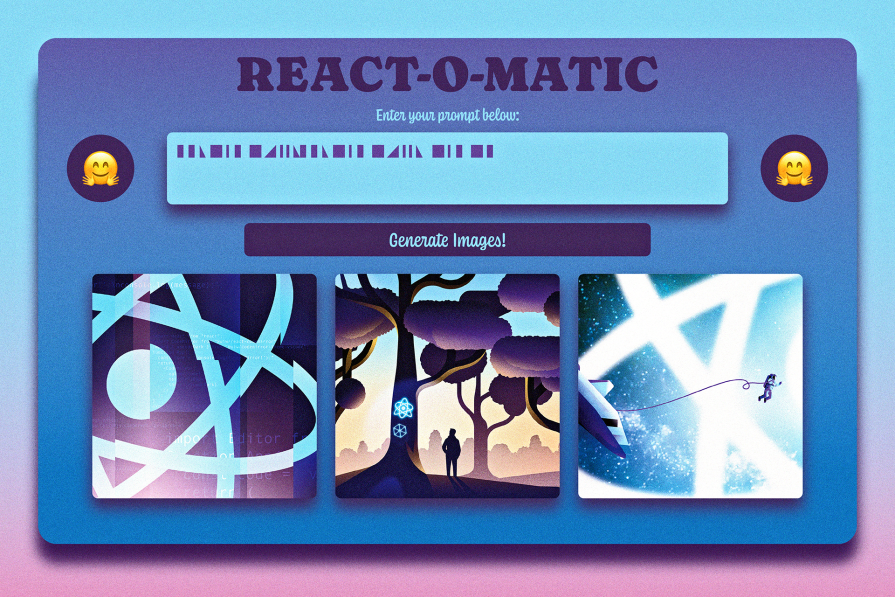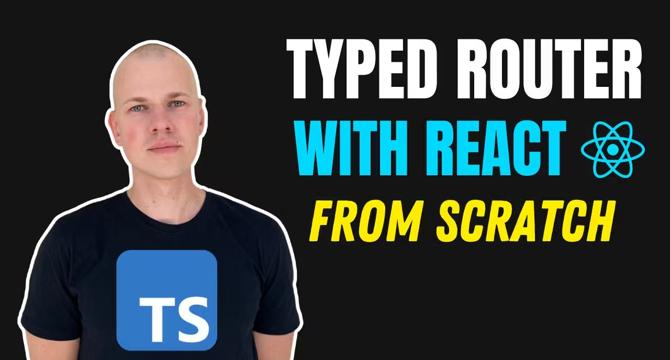React
Dev
194

Image Credit: Dev
React Native v0.80.0-rc in Focus: Key Changes You Should Know About
- React Native 0.80.0-rc version brings a lot of changes including breaking changes, new features, bug fixes, deprecations, and other improvements.
- Breaking Changes: Revamped Welcome Screen, Stricter Imports, Component Naming conventions, Android modules now in Kotlin, and iOS configuration helpers deleted.
- New Features: Stricter TypeScript for enhanced checks, improved
support, radial gradients, extended CSS color support, ESLint rule for preventing deep imports, and more. - Bug Fixes: Improved timers alignment, TypeScript typings, Switch component state, ListEmptyComponent rendering, font scaling, Android TextInput fixes, iOS ScrollView interactions, and more.
- Deprecations & Removals: Several items deprecated or removed for Android and iOS platforms. Under the hood changes include Gradle and debugger updates.
Read Full Article
11 Likes
Hackernoon
296

Image Credit: Hackernoon
Mastering Asynchronous JavaScript Callbacks, Promises, and Async, Await for Cleaner React Components
- Asynchronous JavaScript is crucial in React for handling delays and ensuring a smooth user experience.
- Callbacks were the original way to manage async logic before Promises and async/await.
- Callbacks involve passing functions into other functions to be executed later, leading to callback hell with deeply nested functions.
- Promises provide a cleaner way to handle async code, featuring states like pending, fulfilled, and rejected, allowing for chaining with .then() and error handling with .catch().
- Async/await simplifies async coding, making it read like synchronous code, using await to pause a function until a Promise resolves and try/catch for error handling.
- Best practices for using async logic in React components include avoiding using async directly in useEffect, cleaning up async calls on unmount, and utilizing useEffect for async side effects.
- Real-world examples showcase handling API requests with fetch(), managing loading states and errors, and ensuring cleanup of side effects.
- Key takeaways include handling loading and errors, using AbortController to prevent side effects, and wrapping API calls in try-catch-finally for reliable code.
- The importance of showing loading and error states, cleaning up requests, and writing fetch logic that works is highlighted in the key takeaways.
- Writing clean async logic in React involves focusing on basics like handling loading, error states, and cleanup to ensure a reliable UI.
- Starting with plain fetch(), understanding the problem, and solving it cleanly can lead to good code, and additional tools can be used as complexity grows.
Read Full Article
17 Likes
Logrocket
30

Image Credit: Logrocket
Build a React AI image generator with Hugging Face Diffusers
- Creativity has been elevated with AI enabling image generation through text prompts and descriptions, expanding possibilities for artists and developers.
- The article details building a custom offline AI image generator using React and Hugging Face Diffusers, known for diffusion models.
- Hugging Face offers a wide range of AI tools, models, and datasets, focusing on NLP and machine learning solutions.
- Stable Diffusion XL is highlighted as an advanced text-to-image generation model used in the project.
- The implementation involves running text-to-image models locally and comparing it to using Hugging Face Inference Endpoint for performance, scalability, and cost.
- Diffusion models, like Stable Diffusion XL, reverse the process of introducing static noise, allowing for precise image creation from randomness.
- Hugging Face Diffusers simplifies the working process with pre-trained pipelines, offering control over diffusion for various use cases.
- The application architecture comprises a React frontend making calls to a Flask backend for local AI inference using Hugging Face Diffusers.
- Local inference offers full control and data privacy but requires high-end GPU hardware and complex setup.
- Hugging Face Inference Endpoints provide easy deployment, scalability, and pay-as-you-go pricing, but have dependencies on external service.
Read Full Article
1 Like
Psu
362

Black Panther Developers React To Game’s Cancellation: ‘It Breaks My Heart The World Won’t See It’
- Members of Black Panther developer Cliffhanger Games express disappointment over the game's cancellation.
- Concept artist Karla Ortiz praised the team's work on the detailed and beautiful game, mentioning the sadness of the world not being able to see it.
- Freddie Lee, senior environment architect, appreciated working with talented individuals and described the team as exceptional.
- The game was supposed to involve T'Challa's son fighting the Skrull with dynamic storytelling and the ability to control various characters.
Read Full Article
21 Likes
Discover more
Bitcoinist
84

Image Credit: Bitcoinist
FTX Repayments About To Dump $5B On The Market, How Will Bitcoin And Ethereum React?
- FTX, a collapsed crypto exchange, is about to disburse $5 billion in stablecoin payments to creditors at the end of the month.
- The stablecoin payments won't impact the market negatively as there will be nothing dumped, potentially leading to a market pump depending on where the funds end up.
- The distribution on May 30 could create buying pressure on the market, especially since Bitcoin and Ethereum prices are doing well.
- Analysts expect that investors who receive the funds will reinvest the money back into the market, potentially triggering a rally, with Bitcoin expected to surpass $120,000.
Read Full Article
5 Likes
Hackernoon
57

Image Credit: Hackernoon
Creating a Type-Safe Router for React Without Browser Navigation
- We will build a typed routing navigation system for React apps without using external libraries, suitable for scenarios where simpler routing solutions make sense.
- A custom routing foundation is developed for situations where traditional browser navigation isn't required, offering full control over the navigation experience.
- Views are defined with path identifiers and optional state data, mimicking traditional routing systems but independent of browser features.
- A generic Views type is created to map route identifiers to corresponding React components, ensuring type safety in the navigation system.
- Navigation state management includes maintaining history of visited views and tracking the current position within the history stack.
- The NavigationProvider component is used to initialize the navigation state with the currentIndex set to 0 and an initial view as the starting point.
- A Layout component is implemented to provide a consistent container for all views, including a back button for backward navigation.
- Hooks like useNavigateBack and useAppNavigate are developed to facilitate navigation and ensure type safety in navigating to different views.
- The useNavigate hook powers the navigation system by managing history state and providing type-safe navigation functionality.
- The ActiveView component renders the appropriate UI based on the current navigation state, dynamically displaying the active view component.
Read Full Article
3 Likes
Bloomberg Quint
166

Image Credit: Bloomberg Quint
Breaking News Live: Global Market React To US Court Blocking Trump's Tariffs; Deems Them Illegal
- A major portion of US President Donald Trump's global tariffs has been declared illegal and blocked by the US Court of International Trade.
- The decision, made by a panel of three judges in Manhattan, represents a major setback for Trump's economic policies.
- The court sided with Democratic-led states and small businesses, who argued that Trump had improperly used an emergency law to justify the tariffs.
- Following this decision, US stock futures jumped and the dollar strengthened.
Read Full Article
9 Likes
Dev
385

Image Credit: Dev
Beginner’s Guide to React Query (Now TanStack Query)
- React Query, now officially renamed TanStack Query, simplifies fetching and managing server state in React apps.
- It eliminates the need for manual handling of fetching, caching, and error handling, providing features like automatic background updates and built-in caching.
- TanStack Query is the same as React Query, reflecting a broader set of libraries all grouped under the TanStack umbrella by Tanner Linsley.
- To get started with TanStack Query, install the package, set up a QueryClient, and use the useQuery hook to fetch data efficiently in your React components.
Read Full Article
23 Likes
Dev
26

Image Credit: Dev
🚀 Ant Design Bundle Size Optimization: The Tree Shaking Approach Every React Developer Should Know
- Bundle size optimization is crucial in web development, especially for React developers using Ant Design (antd) components.
- Default imports in Ant Design can lead to bundle bloat, importing the entire library even when using a few components.
- By strategically applying tree shaking with ES module imports, developers can reduce bundle size by up to 80%.
- Utilizing optimized imports for specific components and creating a centralized import file can streamline the process.
- Advanced optimization includes locale-specific imports, icon optimization, and CSS optimization for Ant Design applications.
- Measuring the impact of optimization through bundle analysis tools and before vs. after metrics is essential for tracking improvements.
- Optimizing bundle size not only enhances user experience and SEO but also improves development efficiency and reduces costs.
- Implementing best practices like regular audits, component tracking, and team guidelines can prevent common pitfalls in bundle optimization.
- Tools like Bun/Bunx, ESLint Plugin, Vite, and Rollup are recommended for efficient bundle optimization in React projects.
- By following the outlined techniques, developers can significantly reduce bundle size, improve loading times, and elevate user experience.
Read Full Article
1 Like
Dev
57

Image Credit: Dev
Stop Struggling with Forms in React - 4 Smart Ways to Handle Them
- Forms in React are essential and can be managed using various methods.
- 1. Controlled Forms with React: Utilizes controlled inputs and state management for form handling.
- 2. Formik: A declarative way to handle forms with less boilerplate and easy validation integration.
- 3. Formik + Yup: Allows declarative validation rules with seamless integration for form handling.
- 4. React Hook Form: A lightweight alternative with built-in validation support for efficient form management.
Read Full Article
3 Likes
TechBullion
155

Image Credit: TechBullion
Naga Sai Charan Gubba: Architecting the Future of Mobile with React Native, AI, and Collaborative Leadership
- Naga Sai Charan Gubba exemplifies leadership in mobile technology, blending technical depth with strategic vision to navigate the evolving landscape.
- He specializes in React Native and has worked in sectors like e-commerce, FinTech, health, and eduTech for both startups and Fortune 500 companies.
- Gubba emphasizes the integration of AI into mobile technologies and the need to align technical designs with business objectives.
- His journey from coding to architecting scalable applications showcases the transition from individual contribution to leadership.
- Leading cross-functional teams, Gubba stresses the importance of fostering collaboration and mentoring peers for impactful projects.
- In React Native development, he focused on performance optimization, integrating native codebases, and maintaining efficient CI/CD pipelines.
- Gubba's approach to mentorship involves leading by example, creating learning environments, and structuring continuous learning opportunities.
- He underscores the significance of modularity, efficient state management, and forward-looking architecture in building scalable mobile solutions.
- Through a measured approach to technical leadership, Gubba addressed challenges like app migration with strategic decision-making and incremental improvements.
- He advocates for continuous learning, strategic technology adoption, and stable development workflows to drive innovation while ensuring reliability.
Read Full Article
9 Likes
Dev
314

Image Credit: Dev
Integrating Quill Editor and Image Upload Functionality in a React CMS
- This article focuses on integrating Quill Editor and image upload functionality in a React CMS.
- Quill Editor is implemented using react-quill with custom toolbar setup and configuration.
- The QuillEditor component is created with features like content, index, and onChange event.
- Modules for Quill Editor include options like bold, italic, links, images, videos, etc.
- Image upload functionality is developed in a separate ImageUploader component.
- ImageUploader enables drag-and-drop or click-to-upload image with preview and replacement options.
- The component includes handling for image descriptions and alt text.
- Both Quill Editor and ImageUploader components are designed for reusability in the CMS.
- These additions enhance content creation and management in React-based CMS systems.
- The tutorial provides a comprehensive guide for implementing these features step by step.
Read Full Article
18 Likes
Dev
372

Image Credit: Dev
How to Set Up React 19 in 2025: Comparing Vite, Next.js, and More
- React 19 is revolutionizing frontend development in 2025 with features like React Compiler, streaming SSR, and enhanced use hook.
- To set up a new React 19 project, developers face a choice between Next.js, Vite, or other frameworks.
- Next.js 14 is recommended for React 19 projects due to its close alignment with the React core team and support for React Server Components.
- Vite is a fast bundler suitable for SPAs and dashboards, offering features like a fast dev server and easy configuration for React 19 projects.
Read Full Article
22 Likes
Hackernoon
265

Image Credit: Hackernoon
React Hooks Are Powerful—But Here’s What They Won’t Fix
- React Hooks have revolutionized React by simplifying state management, effects, and logic in functional components.
- However, Hooks cannot fix issues related to bad design choices, unclear component logic, or rushed development decisions.
- They excel at managing state, running side effects, reusing logic, working with refs, optimizing renders, and subscribing to context.
- Hooks do not inherently resolve confusion in component logic or poor separation of concerns within React applications.
- Improper usage of Hooks can lead to complex and unmaintainable code, especially when business logic, side effects, and rendering are mixed.
- Proper refactoring and abstraction are essential for improving the maintainability and clarity of React components using Hooks.
- Hooks also cannot fix issues related to poor naming conventions, state mismanagement, unnecessary rerenders, or lack of testing and debugging.
- While Hooks provide powerful tools for React development, developers need to use them judiciously and consider overall code structure.
- Simplicity in React applications does not solely come from utilizing Hooks but relies on how effectively they are integrated and structured.
- Understanding the limitations and best practices around Hooks is crucial for building maintainable, performant React applications.
- Hooks offer improved syntax, cleaner APIs, and ease of composition, but developers must focus on code organization and logic clarity for successful implementation.
Read Full Article
16 Likes
Dev
283

Image Credit: Dev
Issue with react-native-pie-chart - Error: "color is mandatory in the series"
- The user is facing an error 'color' is mandatory in the series while using the react-native-pie-chart library in a React Native project.
- The error seems to be related to passing colors along with the data.
- The user shared a code snippet where pieData and sliceColor arrays are defined to represent data and colors for the pie chart slices.
- The user is seeking assistance in identifying the cause of the error and how to correctly pass colors with the data.
Read Full Article
17 Likes
For uninterrupted reading, download the app